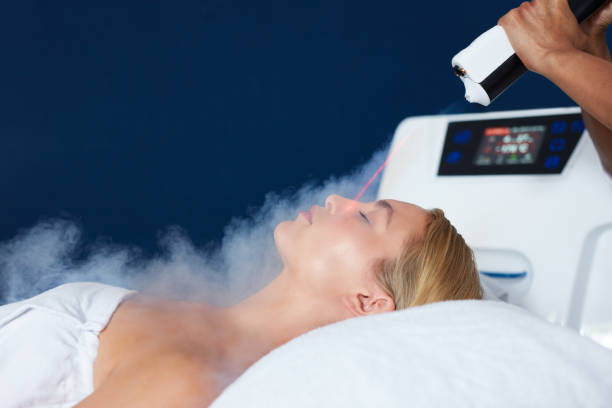Essential Guide To Face Lifting Without Surgery
The quest for youthful skin without invasive procedures has led to significant advancements in non-surgical face lifting technologies. Laser face lifts represent one of the most innovative approaches, offering skin rejuvenation without the downtime associated with traditional surgery. These treatments use focused light energy to address aging concerns like wrinkles, sagging skin, and loss of elasticity. For those seeking facial rejuvenation but hesitant about going under the knife, understanding the range of non-surgical options, their effectiveness, and recovery expectations is essential for making informed decisions about aesthetic treatments.

The demand for facial rejuvenation without surgical intervention has grown significantly as technology advances and treatment options become more sophisticated. Modern non-surgical approaches offer compelling alternatives for individuals seeking to address aging signs while avoiding the risks, downtime, and costs associated with traditional surgical procedures.
What Is Face Lifting Without Surgery?
Non-surgical face lifting encompasses various cosmetic treatments designed to tighten, lift, and rejuvenate facial skin without making incisions. These procedures utilize technologies such as radiofrequency energy, ultrasound waves, laser therapy, and injectable treatments to stimulate collagen production, improve skin elasticity, and restore facial volume. Common non-surgical options include dermal fillers, botulinum toxin injections, thread lifts, radiofrequency treatments like Thermage, and ultrasound-based procedures such as Ultherapy. Each treatment targets specific aging concerns, from fine lines and wrinkles to skin laxity and volume loss.
How to Do Face Lifting Without Surgery
The process begins with a comprehensive consultation with a qualified aesthetic practitioner who evaluates your skin condition, discusses your goals, and recommends appropriate treatments. Preparation typically involves avoiding certain medications and skincare products that may increase sensitivity. During treatment, the specific procedure varies depending on the chosen method. Injectable treatments involve precise placement of products using fine needles, while energy-based treatments use specialized devices to deliver controlled heat or ultrasound to targeted skin layers. Most procedures require minimal downtime, though some temporary swelling, redness, or bruising may occur. Following post-treatment care instructions, including sun protection and gentle skincare, helps optimize results and minimize complications.
Pros and Cons of Face Lifting Without Surgery
Non-surgical face lifting offers several advantages, including minimal downtime, lower risk of complications, and immediate or gradual natural-looking results. These treatments are typically less expensive than surgical alternatives and can be performed in office settings without general anesthesia. The procedures are often customizable, allowing practitioners to address specific concerns with targeted approaches. However, limitations include temporary results requiring maintenance treatments, less dramatic changes compared to surgical procedures, and the need for multiple sessions to achieve desired outcomes. Some treatments may cause temporary side effects like swelling, bruising, or mild discomfort. Additionally, not all aging concerns can be adequately addressed through non-surgical methods, particularly severe skin laxity or significant volume loss.
Insights on Face Lifting Without Surgery
Recent developments in non-surgical facial rejuvenation have introduced innovative technologies and refined existing techniques. Combination treatments, where multiple modalities are used together, have shown enhanced results compared to single-treatment approaches. The trend toward personalized treatment plans considers individual skin characteristics, aging patterns, and lifestyle factors. Practitioners increasingly emphasize the importance of realistic expectations and gradual improvement over dramatic transformation. Patient satisfaction rates remain high when appropriate candidates are selected and treatments are performed by experienced professionals. The field continues evolving with new technologies, improved techniques, and better understanding of optimal treatment protocols.
Cost Considerations for Non-Surgical Face Lifting
Pricing for non-surgical face lifting varies significantly based on treatment type, geographic location, practitioner experience, and individual needs. Understanding these cost factors helps in making informed decisions about aesthetic investments.
| Treatment Type | Average Cost Range | Duration of Results | Maintenance Frequency |
|---|---|---|---|
| Botulinum Toxin | $300-$800 per session | 3-6 months | Every 3-4 months |
| Dermal Fillers | $600-$2,000 per syringe | 6-18 months | Every 12-18 months |
| Thread Lifts | $1,500-$4,500 per treatment | 12-18 months | Every 1-2 years |
| Radiofrequency Treatments | $1,000-$3,000 per session | 6-12 months | Every 6-12 months |
| Ultrasound Therapy | $2,000-$5,000 per treatment | 12-24 months | Every 1-2 years |
Prices, rates, or cost estimates mentioned in this article are based on the latest available information but may change over time. Independent research is advised before making financial decisions.
Factors influencing costs include the practitioner’s credentials and location, the amount of product needed, the complexity of the treatment area, and whether multiple sessions are required. Many practices offer package deals for multiple treatments or maintenance programs that can reduce overall costs. Financing options are often available to make treatments more accessible.
The investment in non-surgical face lifting should be viewed as an ongoing commitment, as most treatments require regular maintenance to sustain results. While individual session costs may seem reasonable, the cumulative expense over time should be considered when budgeting for aesthetic treatments. Consulting with qualified practitioners about realistic timelines and expected costs helps in making informed financial decisions about facial rejuvenation goals.
This article is for informational purposes only and should not be considered medical advice. Please consult a qualified healthcare professional for personalized guidance and treatment.




